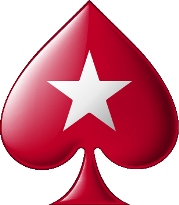Winning any money in a poker tournament is an exhilarating experience, but you find the real money in the top three positions. As an example, consider the data in Table 5.3, which shows the standard payout structure for a $40 PokerStars tournament with 500 players.
The Standard PokerStars Payout Structure for a $40
|
||
| Place | Percent | Payout for $40 Buy-In |
| 1st | 25% | $5,000 |
| 2nd | 15.4% | $3,080 |
| 3rd | 10.5% | $2,100 |
| 4th | 7% | $1,400 |
| 5th | 5.5% | $1,100 |
| 6th | 4.5% | $900 |
| 7th | 3.5% | $700 |
| 8th | 2.6% | $520 |
| 9th | 1.7% | $340 |
| 10th to 18th | 1.1% | $220 |
| 19th to 27th | 0.7% | $140 |
| 28th to 36th | 0.5% | $100 |
| 37th to 45th | 0.4% | $80 |
As the payout figures show, it doesn’t matter fi nancially if you finish in 36th or 28th place. It does, however, make quite a bit of difference if you finish third instead of fourth. The difference between fifth place and fourth place is only $300, but the difference between fourth and third place is $700, between third and second it’s another $980, and between second and first it’s a whopping $1,920. That’s a signifi cant difference when your tournament investment was a $40 buy-in and $4 entry fee.
What’s the lesson? When you survive to the next payout level, such as making it to 36th place in the tournament described in Table 5.3, and it’s a long way to the next payout increase, try to make a move to build your chips if your stack is below average. When your opponents can put pressure on you because you don’t have that many bullets to fire back at ’em, you should be more willing to find a good hand and take a stand. If you’re only one or two places from the next increment, however, hang on for dear life.










